 Douglas Fir Mast, final sanding
Douglas Fir Mast, final sanding
For most of this project, and long before, I assumed I would make hollow Bird’s Mouth masts when I finally got the chance. There are many resources explaining how to do it on the web, as well as in print, but essentially it’s a way of making interlocking staves to create a strong hollow tube of wood.
For a large or tall sail plan, a hollow mast has several advantages. It uses less high quality wood, which can be expensive and hard to find these days in long lengths. It reduces the weight of the mast, which is especially valuable up high where leverage turns every ounce into pounds. A lightweight hollow mast is easier to handle physically, and is more buoyant, which helps prevent a capsized boat from turning turtle. And last, any inherent weakness in individual staves, from knots or other flaws, is compensated for by the other staves, so you can use less than perfect wood.
Birdsmouth Mast diagram and cross sections. (photos are links)
For all these benefits, the trade off comes in the form of complexity, especially for those of us who are mathematically inhibited. In many ways, you’re making a long 3D wooden jigsaw puzzle. Cuts have to quite precise, and glue-up and clamping usually requires more than two hands. Still, it could be a fun challenge, and I was looking forward to it.
But a Melonseed sprit rig is neither tall nor large, ranging from only 10 to 12 feet, and just 3 inches across at the widest point. When I sat down to draw it out, I realized that for all the time and effort required to make one, I was only going to save perhaps a single stick of wood 1 inch square and 6 feet long. Not much gained for all the extra time and effort required. This is partly due to the need to reinforce a hollow mast with solid plugs at key stress points – like the base and partners, as well as hardware attachment points – and at the top the hollow diminishes to nothing. Accepted rule of thumb seems to be, too, that a hollow mast should be 10% larger in diameter than a solid one.
Hmmm. Right now, my time is really valuable. I also have a stack of really ideal wood that’s already the right length. Maybe I should save that challenge for another time. Back to the drawing board.
By carefully laying out the cuts, I found I could get a complete solid Douglas Fir mast out of just two 12 foot 1×6 boards, with very little waste. It would be quick, strong, and relatively easy.
Four layers laminated would make the required 3” thickness exactly. I drew the masts with a straight taper, leaving them a little thicker at the tip to keep enough strength in the middle. I then cut the the two middle laminations to the exact final profile of the mast. This allowed me to glue on the outer laminations without being too precise, then trim and round the whole thing down using the center seam as a guide. Worked great, and made it all very quick and simple.
 All four laminations at mast tip.
All four laminations at mast tip.
When the glue cured, I skipped the whole router fiasco and pulled out the trusty antique drawknife. This great old tool brought each square-ish mast down to nicely round in minutes. It was then easy to follow that up with the block plane. What a pleasure that whole process was – I could listen to music, smell the wood without a dust mask, and with no need for ear plugs could hear the satisfying sound of shavings curling away from the wood with a pleasant zipping noise. And it was waaaaay faster.
The block plane did the fine work and brought them to almost final shape. That left just finish smoothing to do with the rolling pin sander. Sadly, my 30 year old drill, the first tool I ever bought way back in college, did not survive the job, so I had to invest in a new one. Funny now to think of all the projects I’ve done with that drill. It will be missed, but nice that it made it so far into this one.
Even with the masts so close to finished, the sanding still generated an unbelievable amount of dust. It literally covers everything in the basement at the moment. No point in cleaning up until I get past all the sanding of this sort, but man what a mess.
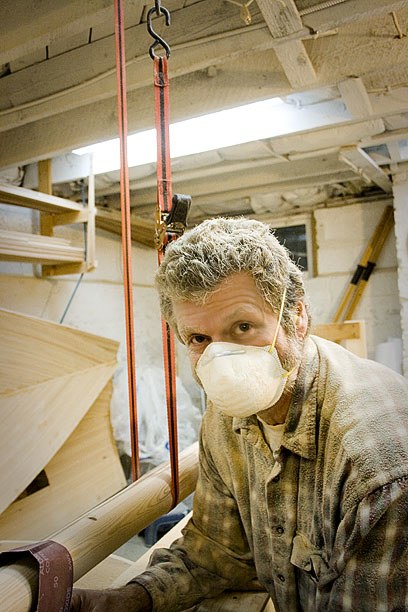 Not my natural hair color, though it’s getting close.
Not my natural hair color, though it’s getting close.
I happen to have some brass rings in various fortunate sizes – exactly 3” for instance – which came in handy for checking roundness and diameter.
Except for hand sanding, fittings and finish, the masts are now both done, as well as the sprits and yards. Since I already have the jigs set up, and the place is covered with dust, I’ll go ahead and continue on this detour by making the oars now rather than later. Not exactly the order of priorities I had in mind, but it will save cleaning up twice.
Moving right along . . .
melonseed skiff, mellonseed skiff, melon seed, mellon seed


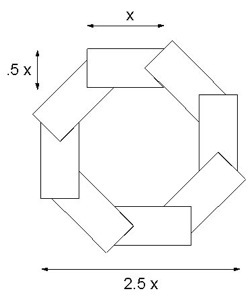



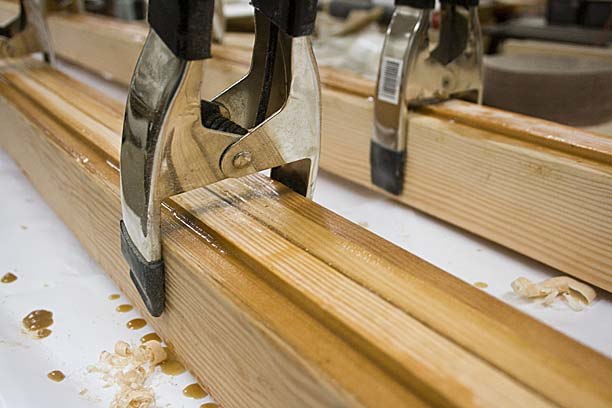
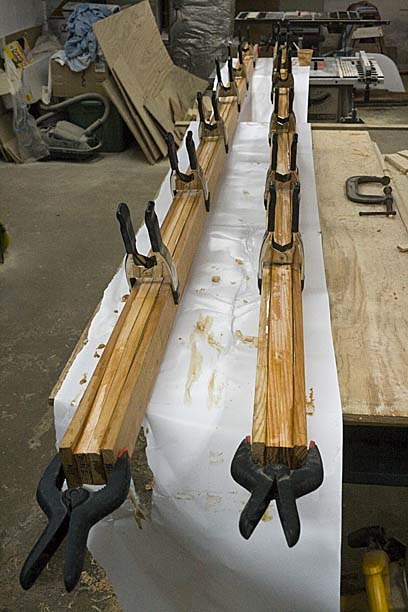

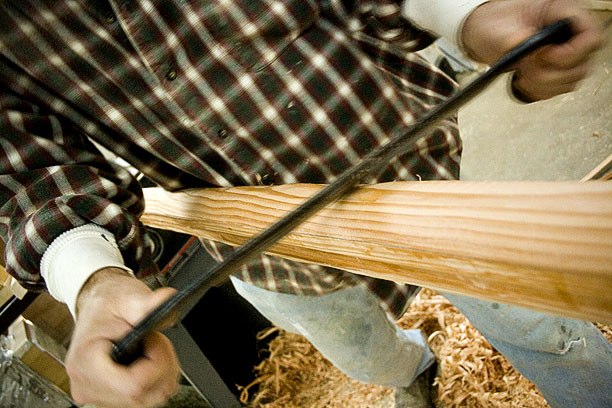
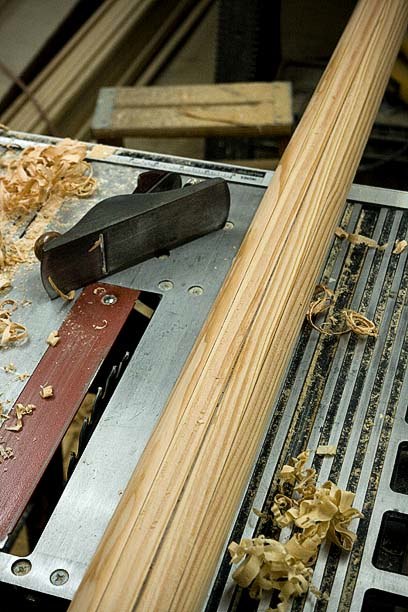
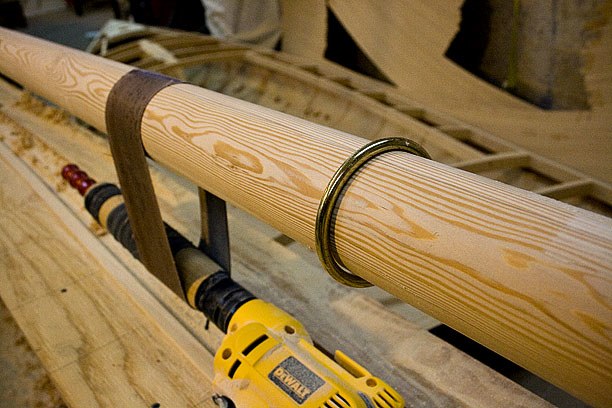

Great job Barry!. I too shaped my melonseed mast from a lamination of two 2x4x10 pieces of douglas fi using drawknife, spokeshave and plane. Looking forward to seeing the finished product (s) at St Michaels this fall. Tom Reppert
Friday, April 23, 2010 – 03:30 PM
Fine work, Barry!
I’m smelling a Melonseed Regatta at St. Michaels this fall!
-T
Friday, April 23, 2010 – 06:34 PM
St. Michaels, here we come. Hope to see you there, Tom. Should be a blast. And should make for a fun race on Saturday, too. Sounds like you’ll have even more challengers this year for your spot in 1st Place, T!
Friday, April 23, 2010 – 11:13 PM
I feel masticated
I feel masticated !
I am curious to know what grit sanding belt?
I believe I started out with 60, then 120. After that I finished by hand sanding with the grain.